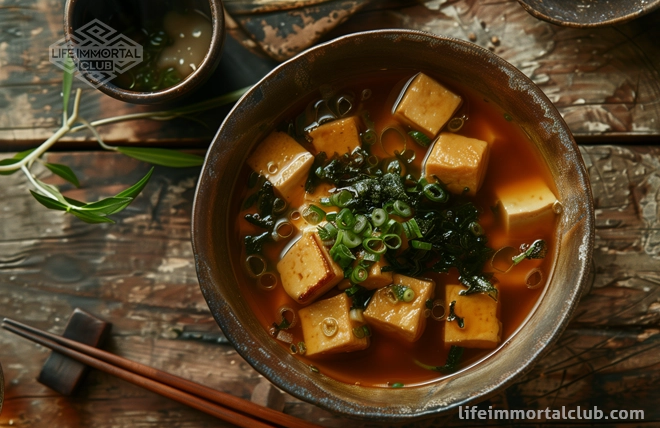Fasting Mimicking Diet Meal Plan (Do It Yourself)

DIY Diet to Shed Pounds for 2024 Resolutions
Hey there, health enthusiasts! As we step into 2024, many of us are armed with New Year's resolutions, and if yours is to shed some pounds, you're in the right place. The Fasting Mimicking Diet (FMD) offers a unique solution that aligns perfectly with your weight loss goals. It's a groundbreaking diet plan that lets you eat and still enjoy the benefits of fasting. Whether you're looking to jumpstart your metabolism, kickstart a healthier lifestyle, or simply find a sustainable way to lose weight, this DIY Fasting Mimicking Diet Meal Plan is your go-to guide. Let's embark on this journey together and make 2024 the year you transformed your health and well-being!
Key Takeaways
- Fasting Mimicking Diet (FMD): A low-calorie, high-nutrition diet that imitates the effects of fasting while allowing you to eat.
- Health Benefits: Potential benefits include improved metabolism, reduced disease risk, and cellular rejuvenation.
- Important Cautions: Not suitable for everyone; consultation with a healthcare provider is essential before starting FMD.
- Meal Plan Guidelines: Focus on plant-based foods, moderate protein, healthy fats, and stay hydrated.
- Transitioning Post-Diet: Gradually reintroduce regular foods to avoid digestive shock.
- Accessible Ingredients: Most ingredients for FMD are readily available in local stores.
- Bean Prep: Soaking and freezing beans can make meal preparation more efficient.
- Calorie Management: Keeping track of calorie intake is crucial for the effectiveness of FMD.
- Recipe Ideas: Soup recipes and snack suggestions suitable for FMD.
- Drinks and Supplements: Stick to water, herbal teas, and consider a multivitamin supplement.
What is a Fasting-Mimicking Diet?
Ever heard of a diet that lets you eat while reaping the benefits of fasting? That's the Fasting Mimicking Diet (FMD) for you! Developed by top-notch scientists, FMD is a low-calorie, high-nutrition diet that tricks your body into thinking it's fasting. This means you get to eat (yes, eat!) while your body does the hard work of rejuvenating itself as if it were in a fasting state.
Potential Health Benefits of a Fasting-Mimicking Diet
The perks of FMD are pretty awesome. We're talking about improved metabolism, reduced risk of chronic diseases, and even enhanced longevity. Some studies suggest it can kickstart cellular repair and rejuvenation - pretty neat, right? Here are the main health benefits you can expect to experience:
- Cell Renewal Through Autophagy: The Fasting Mimicking Diet kickstarts a fascinating biological process known as autophagy, essentially cellular 'spring cleaning'. During this process, your cells get busy breaking down and recycling their worn-out parts, which can be a game-changer for your health. It’s like giving your cells a fresh start, potentially lowering disease risk and boosting cell efficiency by clearing out the old, dysfunctional cellular junk.
- Enhanced Detoxification: When you're on this diet, it’s not just about eating less. It's about giving your body a chance to up its detox game. With fewer dietary toxins coming in, your body can get down to business, cleaning out toxins that have been chilling in your fat cells. This can mean better functioning organs and a happier, healthier you.
- Revitalized Healing Processes: Think of the Fasting Mimicking Diet as a vacation for your body. With fewer calories to deal with, your body isn’t bogged down with the usual digestion workload. Instead, it can redirect that energy to repairing and renewing tissues, potentially leading to deeper, more effective healing and rejuvenation at the cellular level.
- Metabolic Overhaul: This diet is more than a temporary fix; it's about resetting your metabolic machinery. It nudges your body towards improved insulin sensitivity, cuts down inflammation, and helps balance hormones. Sure, you might see some weight drop off as a side effect of eating less, but the real win here is the long-term metabolic health boost. This can be a critical factor in steering clear of issues like diabetes and obesity in the long haul.
Pre-cautions
Hold your horses, though! FMD isn't for everyone. It's crucial to chat with your healthcare provider before starting, especially if you have medical conditions or dietary restrictions.
Please do not make any drastic changes in your diet without consulting with your doctor, especially if:
- you take medication such as insulin, statins, steroids, immunosuppressants, and the like
- you have diabetes, low blood pressure, cancer, or other medical conditions
- you have a history of eating disorders
- you have a very low BMI or are underweight or frail
- you are over 65 years old
Resources
There's a wealth of info out there! From scientific studies to books by Dr. Valter Longo, the brain behind FMD, you've got plenty of resources to explore. It can provide more in-depth information on this topic, see it here The Longevity Diet by Valter Longo, PhD
Rules for the Fasting-Mimicking Diet Meal Plan
Best Tip: quality over quantity. Focus on plant-based, nutrient-rich foods. Keep protein moderate, and fats mostly healthy. And remember, hydration is key!
Here are the main rules to follow:
- Restrict Calories: Limit your daily intake to 900 calories or fewer. According to Dr. Gundry, this mirrors the benefits of a full month of continuous calorie restriction.
- Stay Vegan: The plan is entirely plant-based, excluding all animal proteins and dairy.
- Lectin-Light: Avoid plants with a high lectin content. Beans and legumes should be soaked and pressure-cooked to minimize lectin content, with a daily maximum of one cup (8oz).
- Whole Foods Only: No ultra-processed processed foods are allowed.
- Sugar-Free: Exclude refined sugars, plus most high glycemic fruits. A limited quantity of berries and a minimal amount of honey is acceptable.
- Nutrition-Dense: Adhere to a nutritarian approach, focusing on nutrient-rich foods that are low in calories. Don’t deprive yourself of essential nutrients. Consider incorporating microgreens and sprouts into the menu to enhance nutrition without added calories.
Transition after the Fasting-Mimicking Diet Meal Plan
Ease back into your regular diet. Gradually reintroduce foods to avoid shocking your system. It's like waking up gently from a deep sleep. Try starting back with a day of plant-based, normal-calorie diet. Include complex carbs like sweet potatoes, beans, or lectin-free grains.
About Sourcing and Cooking Methods
Go for organic, whole foods. As for cooking, think steaming, boiling, or raw – keep it simple to preserve nutrients.
- Maximizing Nutritional Value with Smart Choices: To hit the nutritional jackpot, focus on getting your hands on local, organic, and seasonal goodies. It's all about striking a balance between raw and cooked veggies to get the best of both worlds.
- Realistic and Practical Eating: Let's keep it real – it's not about nailing it perfectly every time. It's more about making the most of what you've got around you. Take me, for example – hanging out in Romania during the fall, I wouldn't go on a wild goose chase for tropical treats. It's all about working with what your local environment offers.
Accessibility of this Fasting-Mimicking Diet Meal Plan
Good news! You don't need exotic ingredients. Most stuff you'll need is likely at your local grocery store or already in your pantry.
Beans and Legumes, Preparation and Storage
Beans are your new best friends. Soak 'em overnight to reduce cooking time and enhance digestibility. Store them properly to maintain freshness.
- Beans and Legumes as Meal Staples: In our meal plan, beans and legumes aren't just an option; they're a must-have in every dish. But remember, it's crucial to soak and pressure-cook them properly. This little trick significantly cuts down on those pesky lectins that can be a bit of a bother.
- Lentil Lowdown: Lentils need a good rinse, but skip the soaking. Toss them into the pressure cooker for about 15 minutes. A heads-up though: not all lentils are created equal. Overcooking can turn some into mush. That's why sticking to green lentils, often labeled as French lentils, is a smart move – they keep their shape and texture like champs.
- Chickpea Cheat Sheet: Chickpeas demand a bit more TLC. Give them an overnight soak, a few good rinses, and then set your pressure cooker for around 24 minutes. And here's a pro tip: hold off on adding salt to the water. It helps them cook just right.
- The Black Bean Strategy: These guys need a solid 25 minutes in the pressure cooker. It’s the sweet spot for getting them perfectly cooked – tender but not falling apart
Efficient Bean Preparation
Batch cook and freeze – your future self will thank you. It's all about making your meal prep smoother and quicker.
- Streamlining Your Fasting-Mimicking Diet: To make your DIY fasting-mimicking diet as smooth as butter, get ahead of the game by preparing your beans in advance and popping them in the freezer. This little prep trick means you can toss them straight into stews or other dishes whenever you need them.
- Canned Beans as a Quick Alternative: If you're pressed for time, organic canned beans are a convenient backup. They're already soaked and cooked, so they're pretty much ready to roll when you are.
- Simple Steps to Stellar Bean Stews: Cooking up a bean stew is a piece of cake. Start with a splash of extra virgin olive oil (or any oil you fancy), then get those onions sizzling until they're sending out that mouth-watering aroma. Next, stir in garlic and your prepped beans, and add a splash of water to keep everything from sticking. If you're throwing in greens like kale, add them towards the end to keep them fresh and vibrant. And don't forget a sprinkle of fresh herbs like parsley or cilantro – they're the cherry on top for both flavor and nutrition.
Freeze Beans in Souper Cubes
Ever heard of Souper Cubes? They're a game-changer for freezing beans in perfect portions. Just pop 'em out when you need them!
- Making Meal Planning Work for the Spontaneous Cook: I'll be honest, rigid meal planning and my fly-by-the-seat-of-my-pants cooking style don't always mix. But, I've found a few tricks that really help streamline the process, even for us impulsive chefs.
- My Go-To Cooking Hacks: Prepping ahead is a game-changer. Soaking, pressure-cooking, and then freezing beans and lentils in individual portions is the way to go. I use reusable silicone bags and portioned freezing trays – they're super handy for keeping everything organized and ready to use.
Spices and Salt for the Fasting-Mimicking Diet Meal Plan
Spice it up! Use herbs and spices to add flavor without the extra calories. But watch the salt – moderation is key.
- Embracing Simplicity in Seasoning: During a cleansing period, keep it simple yet flavorful. Herbs de Provence is a go-to, along with the classic duo of salt and pepper for that extra zing.
- Fresh Herbs for a Flavor Boost: Don't underestimate the power of fresh herbs to elevate a dish. Cilantro, parsley, dill, rosemary, thyme, oregano, and basil can turn a simple meal into a culinary delight.
- Pesto and Calorie Considerations: While pesto is a fantastic addition to many dishes, during a cleanse like this, its higher calorie content from oils can be a bit of a hiccup.
- Seasoning Sensibly: When it comes to salt, adjust according to your taste buds. Cutting out processed foods means you might need to add a bit more. I usually go for Himalayan pink salt for its mineral content.
- Sea Salt and Seaweed Alternatives: In the U.S., mineral-rich sea salts are a great choice. And if you're looking to mix things up, try adding seaweeds to your dishes. They not only offer a unique umami flavor but are also a natural source of iodine.
Counting Calories for the Fasting-Mimicking Diet Meal Plan
Keep an eye on your calorie intake. It's lower than usual on FMD, so tracking helps ensure you're on point.
- Reconsidering Calorie Counting: Normally, one should not obsess over every calorie, and I generally suggest steering clear of that mindset. However, when you're navigating the waters of a calorie-restricted meal plan, keeping an eye on those numbers becomes a part of the journey.
- The Eye-Opening Aspect of Portion Control: What will strike you the most during this diet is how easy it is to miscalculate what we eat. Staying under 900 calories a day means a person has to be extra vigilant, particularly with calorie-dense foods like oils, nuts, beans, and starchy veggies. It was all about finding that perfect balance in portion sizes.
Calories in Beans and Oils
Beans are low in calories but high in nutrients. Oils, though, are calorie-dense, so use them sparingly.
- Balancing Beans and Legumes: Beans and legumes are key players in this diet, but it's important to keep an eye on their intake because of their calorie content. The plan advises capping your daily bean or legume consumption at about 8oz (1 cup).
- Chickpeas and Lentils in Moderation: To maintain a palatable and varied diet, including chickpeas and lentils is a great idea. However, it's wise to limit these to a maximum of 1/2 cup per meal to manage calorie intake effectively.
- Mindful Oil Consumption: Oils, while nutritious, are also high in calories and need careful monitoring. Opt for healthier options like extra virgin olive oil, coconut oil, and sesame oil in this plan.
Calorie Content of Key Ingredients: Keeping track of the calorie content of the main ingredients can help in planning your meals better. Here's a quick overview:
- 1 cup of boiled lentils: approximately 230 calories
- 1 cup of boiled chickpeas: around 267 calories
- 1 cup of boiled black beans: about 227 calories
- 1 tablespoon of extra virgin olive oil: roughly 119 calories
- 1 tablespoon of avocado oil: close to 124 calories
- 1 tablespoon of coconut oil: nearly 117 calories
- 1 tablespoon hemp seed oil: around 126 calories
- 1 tablespoon tahini (sesame seed butter): roughly 89 calories
- 2 tablespoons hemp seeds: approximately 111 calories
- 1 Brazil nut (1 kernel): about 33 calories
- 10 olives: roughly 59 calories
- 1 cup full-fat coconut milk (canned): around 552 calories
Preparing Sweet Potatoes
Sweet potatoes are a fantastic carb source for FMD. Roast, steam, or boil them – they're versatile and delicious.
- Navigating Vegetable Portions: When it comes to most veggies and greens, their low calorie count means you can enjoy them without much worry. However, when we talk about starchy vegetables, like sweet potatoes, it's a different story. Keeping an eye on portion sizes for these is key.
- Caloric Content of Sweet Potatoes: Let's break it down: about 100 grams of cooked sweet potato, just under 1/2 cup, packs around 86 calories. So, a little bit of portion control goes a long way here.
- Maximizing Nutritional Value of Sweet Potatoes: There's a neat trick to boost the health benefits of sweet potatoes. Cook them, let them cool, and then reheat them before eating. This process bumps up their resistant starch content, making the sugar absorption slower and more beneficial for you.
- A Preferred Method: Baking sweet potatoes whole, then letting them chill in the fridge overnight or for a few hours, and reheating them when it's mealtime is my go-to approach. It's simple and brings out the best in them nutritionally and taste-wise.
Preparing Non-Starchy Vegetables
Load up on these! They’re low in calories and high in fiber and nutrients. Raw, steamed, or lightly sautéed – have them your way.
- Diversity in Vegetable Consumption: To make the most of your nutrient intake, it's great to mix up how you consume your veggies – think raw crunches, soothing steams, and delightful roasts. For instance, raw cauliflower is a favorite of mine, but I prefer my broccoli cooked. And there's nothing like the versatility of cabbage – fabulous both as a fresh, crisp salad and when it's deliciously roasted.
- Adjusting for Digestibility: If raw veggies tend to upset your stomach, don't sweat it. Feel free to swap any raw vegetables in this plan with their cooked counterparts. It’s all about making this diet work for you.
Calorie Counts for Common Vegetables: Keeping track of calories can be helpful, especially in a plan like this. Here's a quick look at the calorie content of some vegetables you'll encounter:
- 1 large head of cauliflower (840g): about 209 calories
- 1 bunch of broccoli (608g): roughly 205 calories
- 1 medium onion: around 44 calories
- 1 cup of chopped cabbage: just 22 calories
- 1 bulb of fennel: approximately 73 calories
- 1 raw carrot: close to 30 calories
- 100g of raw beets: around 43 calories
- 200g of asparagus: about 40 calories
- 100g of sweet potato (roughly 1/2 cup): around 86 calories
Fasting-Mimicking Diet, Soup Recipes
Soups are perfect for FMD. They're hydrating, filling, and nutrient-packed. Plus, you can get creative with the ingredients.
Here are some soup recipe ideas for the fasting-mimicking diet DIY:
- Creamy Nettle and Cauliflower Soup (You can replace nettles with spinach or kale)
- Cream of Celeriac, Parsnip and Cauliflower
- Low Histamine Cabbage Soup (Skip the chicken)
- Easy, Warming Soup with Cauliflower and Mustard Greens
- Italian Style Mustard Green and Sweet Potato Soup (Skip the prosciutto)
- Healing Vegetable Soup with Kale and Broccoli Sprouts
- Healthy Asparagus Soup (Vegan, Low-Lectin, Low-Histamine)
Snacks for a Mimicking Diet Meal Plan
Craving a snack? Think nutrient-dense and low-calorie – like nuts, seeds, or chopped veggies.
Heres a good example, make this mini-brownies recipie to keep larger cravings at bay:
- Combine all the dry ingredients in a bowl: 31g of flax meal, 21g of hemp seeds, 10g of cacao powder, 20g of plantain flour, 10g of psyllium husk, 60g of tigernut flour, 30g of chopped walnuts, a pinch of salt.
- Blend the wet ingredients: 60g sweet potato, 20ml coconut milk, 20ml water (add more if necessary).
- Gently combine the wet and dry mixtures until they form a cohesive, slightly sticky dough. Roll the dough between two pieces of parchment paper to about 1/4 inch thickness, or slightly thinner. Then, divide it into approximately 16 equal parts.
- Bake at 140C (285F) for about 25 minutes.
- Note: These bites are not inherently sweet. If you prefer a touch of sweetness, consider adding some inulin powder.
- Calories: Each serving yields roughly 50 calories.
Drinks and Supplements for a Fasting-Mimicking Diet Meal Plan
Water, herbal teas, and maybe a daily multivitamin. Keep it simple to support your body's fasting mode.
- The Importance of Staying Hydrated: When you're following a diet like the Fasting Mimicking Diet, keeping up with your hydration is more crucial than ever.
- Daily Water Intake Goals: Make it a point to drink at least 2 liters of water every day, whether it's filtered or full of minerals.
- Coffee and Caffeine Considerations: In our plan, we've included coffee, but embarking on the FMD could also be a golden chance for those pondering a caffeine hiatus.
- Tea Options for the Fasting Mimicking Diet: Matcha and green tea get the green light. However, if you're leaning towards cutting out caffeine altogether, there's a whole world of herbal teas waiting for you. Some personal favorites include tulsi, lemon balm, dandelion, and freshly brewed ginger tea.
Conclusion
There you have it – your very own guide to the Fasting Mimicking Diet Meal Plan! Remember, it's about smart choices, not deprivation. Give it a go, and you might just be amazed at how good you feel. And remember, always consult with your healthcare provider before starting any new diet plan. Happy fasting (or should we say feasting in disguise)!






